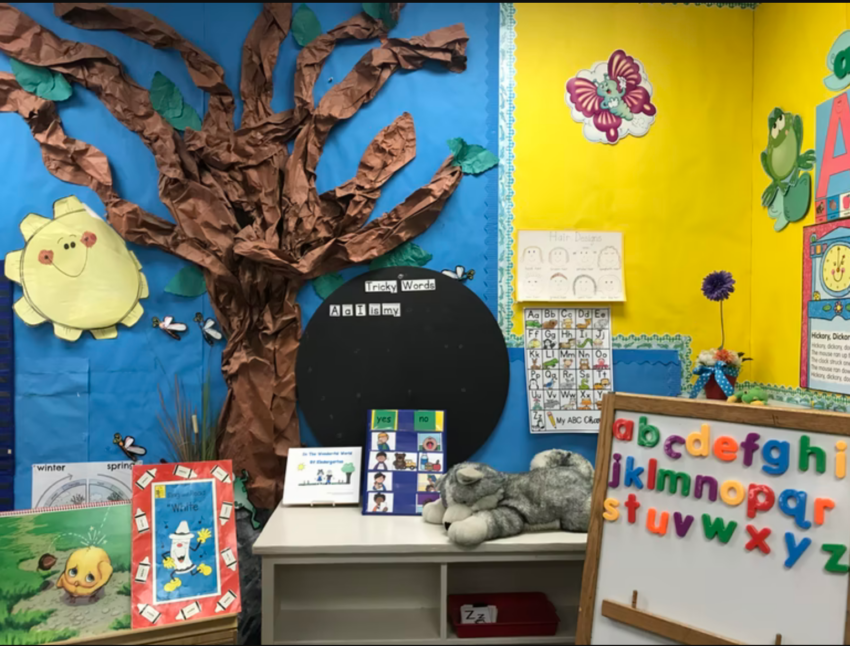The classroom is the perfect place to teach children sustainability practices that will stay with them throughout their lives. By implementing an eco-friendly approach to your learning environment, you can share the magic and importance of preserving the Earth with your students.
Helpful classroom donations
There are many eco-friendly school supplies available now, so make sure to emphasize those traits the next time you stock up for donations.
Classroom decorations should inform and inspire the children, but all of that paper and ink can be wasteful. Paper printed with vegetable ink breaks down more quickly when recycled, so consider environmentally-friendly classroom decorations printed with vegetable inks. Providers like Sproutbrite are prime examples of classroom decoration retailers using vegetable inks to lower their carbon footprint.
Instead of buying another year’s worth of brand new ink-dyed notebooks, try purchasing recycled or compostable notebooks and writing paper for the classroom instead. Some eco-friendly notebooks use recycled paper and soy-inks to reduce processing and waste.
While it may sound crazy, staple-less staplers can reduce waste and make worksheets or packets easier to recycle and compost. These accident-free staplers also allow younger children to use a classroom tool that would usually be unsafe for them.
Eco-friendly reading materials
Kids love storytime, so look for books that the teacher can read aloud to promote environmentalism.
My Friend Earth by Patricia MacLachlan, illustrated by Francesca Sanna is a beautifully illustrated book that celebrates Mother Earth as a friend and giver and encourages children to be good friends to her as well. It’s great for children aged three and up.
Alba and the Ocean Cleanup by Lara Hawthorne is a picture book that tells the story of Alba, who discovers her environment is changing even as she lives in it. It teaches readers how to care for the ocean and beaches.
Getting the children involved
A good way for teachers to hold their students’ attention is by opening the floor for discussion. Teachers should discuss climate change with students and answer questions to help with climate anxiety. Then, the teacher can develop a plan of action together for the classroom and ask questions to reflect on the lesson.
If you can, move the children outside and into the environment. Ask teachers to invite students to reflect on what they see, feel, hear, smell, and touch. After the kids go back inside, they can brainstorm ideas for protecting or cleaning up around the school.
Class gardens
Building a garden as a classroom activity can help students understand where their food is coming from and why it’s important to support local farmers and gardeners. It can also introduce talking about bees or other flower-friendly insects that need our help.
Before you go
Making the classroom a more eco-friendly place is up to the parents, teachers, and students. Together you can find ways to discover, understand and help our environment while improving the space you learn in along the way. Sustainability in schools is attainable if you start in the classroom.
p.s. Related posts:
6 Books on Light Pollution and the Night Sky
Celebrate Tree Picture Books for Earth Day
Environmental-Themed Picture Books
10 Picture Books on People Protecting the Planet
The Kids Will Save Us: Youth Activists Children’s Books!
RISD Industrial Design Students Win BlueGreen Innovation
How to Encourage Children to Be More Sustainable?
To examine any book more closely at Amazon, please click on image of book.
As an Amazon Associate, I earn from qualifying purchases.
My books:
Food for the Future: Sustainable Farms Around the World
- Junior Library Guild Gold selection
- Selected as one of 100 Outstanding Picture Books of 2023 by dPICTUS and featured at the Bologna Children’s Book Fair
- Starred review from School Library Journal
- Chicago Library’s Best of the Best
- Imagination Soup’s 35 Best Nonfiction Books of 2023 for Kids
Amazon / Barefoot Books / Signed or Inscribed by Me













